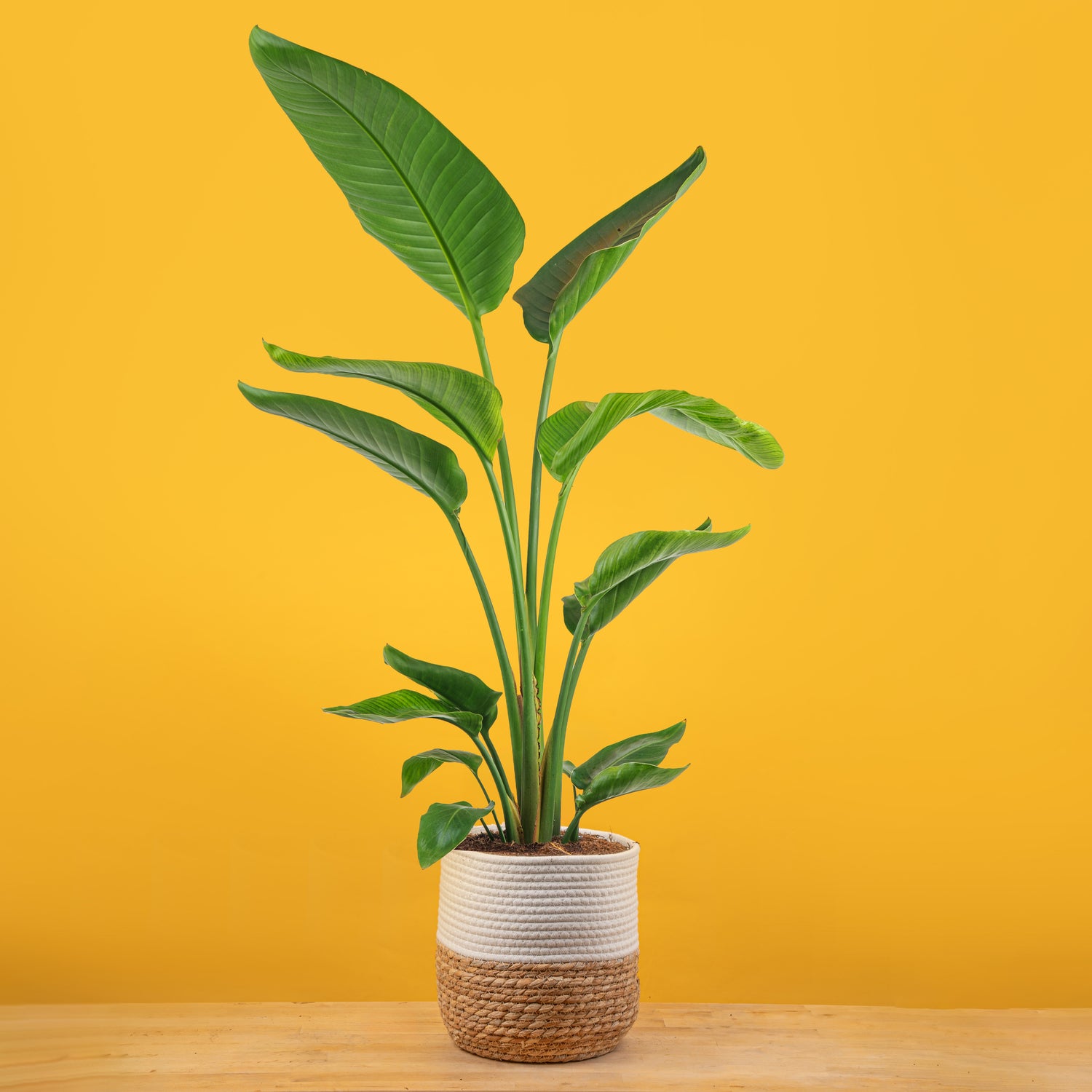Plant Care: Bird of Paradise (Strelitzia nicolai)
Care for a Bird of Paradise houseplant in a 10-inch pot. This guide covers how much and how often to water, the best light conditions, fertilizing schedules, temperature and humidity preference, and how to manage common leaf issues.
How to care for a bird of paradise houseplant in a 10-inch pot
Bird of paradise is a bold tropical houseplant with broad, banana-like leaves that make a dramatic statement in any room. While it rarely blooms indoors, its upright form and sculptural foliage bring a lush, modern look to home interiors. This plant grows well indoors with the right light and consistent watering routine.
Watering Your Bird of Paradise
Bird of paradise likes consistent moisture but doesn’t want to sit in soggy soil. Let the top 50% of the soil dry out between waterings. An easy way to check soil moisture is to insert a wooden chopstick, skewer, or similar tool halfway down into the soil. If it comes out clean and dry, it's time to water. If soil sticks to it, wait a few more days.
Watering guideline for a 10-inch pot:
Give the plant 3 cups of lukewarm water on watering day.
Pour the water slowly and evenly over the soil surface so all the roots are moistened. Avoid watering directly into the plant’s center or onto the leaves.
Important: Never let the plant sit in standing water. If it’s in a decorative container, check the outer pot or saucer 15–20 minutes after watering and empty any excess.
Light Requirements
Bird of paradise grows best in bright light. A spot that receives direct morning sun (until around 10:00 a.m.) is ideal. The plant will also tolerate bright, indirect light for the rest of the day.
If it doesn’t get enough light, you may see:
-
Slower growth
-
Smaller or folded leaves
-
Leaning toward the light source
Rotate the plant every couple of weeks to help it grow straight and evenly.
Fertilizing
Fertilize only during the spring and summer growing season. Use a time-release houseplant fertilizer or a balanced water-soluble fertilizer (like 20-20-20) once a month, following package directions.
Avoid fertilizing in fall or winter when growth slows down. Overfertilizing in the off-season can stress the plant and damage roots.
Temperature and Humidity
As a tropical plant, bird of paradise prefers:
-
Temperatures above 60°F
-
Humidity above 40%, though it tolerates average indoor conditions
If your home is very dry, especially in winter, consider:
-
Using a humidifier nearby
-
Grouping plants together
-
Setting the pot on a pebble tray filled with water (keep the bottom of the pot above the waterline)
Keep the plant away from cold drafts, heaters, or air conditioning vents to avoid leaf damage.
Common Leaf Concerns
-
Inward curling leaves usually point to underwatering or dry air
-
Crispy brown tips often result from low humidity or inconsistent watering
-
Splitting leaves are normal and natural—this allows light to pass through in the wild
If you notice browning, check your watering routine and humidity level.

Repotting
Bird of paradise tends to grow slowly indoors, but may need repotting every 1–2 years. Signs it’s time to repot:
-
Roots growing out the drainage holes --- not one or two roots but enough that the drainage holes are starting to get blocked
-
Water running straight through the pot
-
Growth slowing despite regular care
Move up one pot size and use a well-draining indoor potting mix. A blend with coir or peat, pine bark, and perlite is ideal. Avoid dense mixes that stay soggy.
More on repotting here:
Repotting Houseplants – Costa Farms
YouTube Tutorial